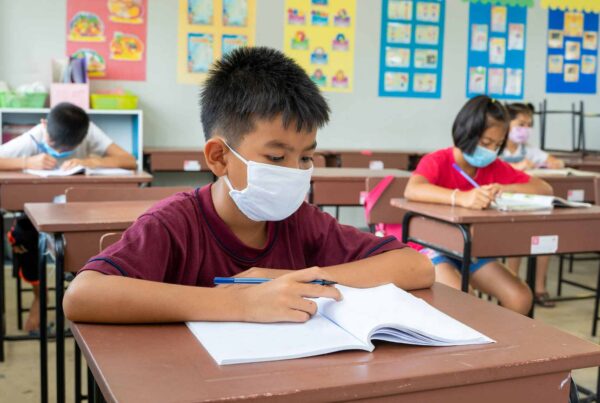Sixty-nine percent of nursing homes and assisted living facilities that registered their PPE needs with Get Us PPE between August and November had no supply left of at least one type of personal protective equipment (PPE), including nitrile gloves, surgical masks, and isolation gowns.
As the PPE crisis continues to scourge the nation, Get Us PPE keeps ardently working to provide underserved communities with protective equipment. Among these communities, long-term care facilities, which include nursing homes, skilled nursing facilities, and assisted living facilities, continue to report shortages.
Between August and the end of October this year, Get Us PPE collected data from long-term care facilities requesting PPE. 69% stated they were out of one or more types of PPE, while 36% both lacked PPE and had at least one confirmed COVID case. This reflects a shocking PPE crisis in some of our nation’s most at-risk communities. According to The COVID Tracking Project, long-term care facilities account for 40% of COVID-19 deaths in the US, despite making up only 1% of the population.

Nursing homes during COVID. Photo credit: Flickr, Gilbert Mercier
This shortage is part of a larger trend. At Get Us PPE, October was the third consecutive month in which over 70% of facilities requesting PPE had no supply of one or more types of protective equipment. Get Us PPE reports more than 16,900 requests for PPE their database, and, between August and October, long-term care facilities made up 18% of requests.
The findings at Get Us PPE coincide with a recent study that found that PPE shortages extend to much of the country. The research performed by AARP Public Policy Institute and the Scripps Gerontology Center at Miami University in Ohio gathered data looking at the spread of the virus at nursing homes, focusing on the infection rates, death tolls, PPE shortages, and staff shortages.
Preliminary findings between August and the end of September show:
- Every state indicated PPE shortages with the national average at 25.5%. A shortage is defined as not having a one-week supply of N95 masks, surgical masks, gowns, gloves, and eye protection.
- Maine was the lowest-performing state, with 60% of nursing homes lacking a one-week supply. Utah was the highest-performing state with 8% of nursing homes reporting PPE shortages.
- One in four nursing homes reports they’ve confirmed at least one COVID case among their residents. Nearly 50% report at least one confirmed COVID case among their healthcare staff.
You can review the data for your state between August 24 and September 20, 2020, on the AARP Nursing Home COVID-19 Dashboard.
Over the summer, the PPE supply chain was able to catch up to the demand to some degree, but under-resourced facilities such as nursing homes and assisted living facilities, are still unable to acquire much-needed protective equipment. While large hospital systems have been able to restore their PPE inventory by purchasing in bulk, smaller facilities cannot afford PPE or do not have a need for those bulk orders. Many suppliers are reluctant or unable to fulfill small orders. And the problem runs deeper than that. Many of our PPE recipients provide low or no-cost care to clients and lack funds to make PPE orders, especially at the high unit prices charged for small orders. Often, the price of PPE units depends on the size of the order. Smaller orders of N95 masks can run up to $15-20 each, compared to $5-8 each if bought in a bulk order.
The PPE crisis requires immediate attention. As a third wave looms, non-hospital facilities account for 92% of PPE requests at Get Us PPE. These facilities include long-term care facilities as well as home health aid organizations, homeless shelters, disaster relief shelters, free clinics, Indian Health Services, and schools. As winter approaches, the number of infections is already going up. Get Us PPE is preparing to respond to a possible PPE crisis in hospitals that threatens to be worse than in April, while for some facilities, the PPE crisis never abated.
Considering these facilities house some of our most at-risk citizens, we must fight the virus by providing PPE to those in need.




